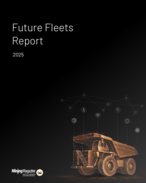The rules were made available to the mining community December 31 and were based on recommendations by the Technical Study Panel on the Utilization of Belt Air and the Composition and Fire Retardant Properties of Belt Material in Underground Coal Mining.
The group of industry experts released an independent scientific review and report in December 2007 as part of its establishment under Section 11 of the Mine Improvement and New Emergency Response (MINER) Act of 2006.
One item under much contention by the industry is the agency’s allowance of belt air from the entry to ventilate a mine’s working sections. MSHA noted in the ruling, however, that approval of such must be obtained as part of a mine’s ventilation plan.
All mines must also replace point-type heat sensors with carbon monoxide detectors and place flame-resistant belt in service within one year, with MSHA adding that existing belts must be changed out within 10 years.
Lifeline signal standardisation is now required, including the identification of travel direction and location of self-contained self-rescuer (SCSR) storage caches, personnel doors and refuge alternatives.
Other regulations in MSHA’s final rule include:
The improvement of belt maintenance by requiring belts to be aligned, damaged rollers to be replaced, and by prohibiting materials in the belt entry where they may contribute to a frictional heating hazard;
Establishment of airlocks where high air pressure differentials exist on personnel doors along escapeways to allow safe access to adjacent entries;
A requirement for lower dust levels in belt entries for mines that use air from the belt entry to ventilate a working section if the working section is on a reduced dust standard; and
An outline that, within one year after MSHA approves smoke sensors for use in underground coal mines, mines install smoke sensors in addition to carbon monoxide sensors in mines that use air from the belt entry to ventilate the working section.
“This final rule calls for improved flame resistant conveyor belts to better protect miners in underground coal mines," said agency head Richard Stickler.
“It also includes requirements for fire prevention and detection in belt entries, standardised tactile signals on lifelines, and approval of the use of air from the belt entry to ventilate working sections."
MSHA also released the final rule last week for refuge chamber alternatives; it made printable versions of the complete rules as published in the Federal Register available on its website for mine use.
























